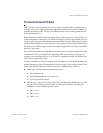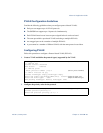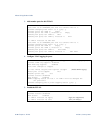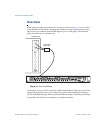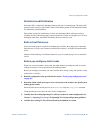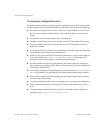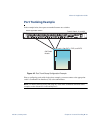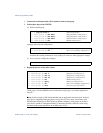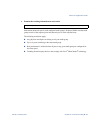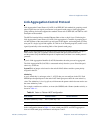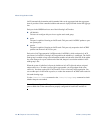Alteon OS Application Guide
Chapter 4: Ports and Trunking
9542C4911, January 2007
Statistical Load Distribution
Network traffic is statistically distributed between the ports in a trunk group. The Alteon OS-
powered switch uses the Layer 2 MAC address information present in each transmitted frame
for determining load distribution.
Each packet’s particular combination of source and destination MAC addresses results in
selecting one line in the trunk group for data transmission. If there are enough Layer 2 devices
feeding the trunk lines, then traffic distribution becomes relatively even.
Built-In Fault Tolerance
Since each trunk group is comprised of multiple physical links, the trunk group is inherently
fault tolerant. As long as one connection between the switches is available, the trunk remains
active.
Statistical load balancing is maintained whenever a port in a trunk group is lost or returned to
service.
Before you configure static trunks
When you create and enable a static trunk, the trunk members (switch ports) take on certain
settings necessary for correct operation of the trunking feature.
Before you configure your trunk, you must consider these settings, along with specific config-
uration rules, as follows:
1. Read the configuration rules provided in the section, “Trunk group configuration rules”
on page 96.”
2. Determine which switch ports (up to six) are to become trunk members (the specific ports
making up the trunk).
Ensure that the chosen switch ports are set to enabled, using the /cfg/port command.
Trunk member ports must have the same VLAN configuration.
3. Consider how the existing Spanning Tree will react to the new trunk configuration. See
Chapter 5, “Spanning Tree Group” for Spanning Tree Group configuration guidelines.
4. Consider how existing VLANs will be affected by the addition of a trunk.



